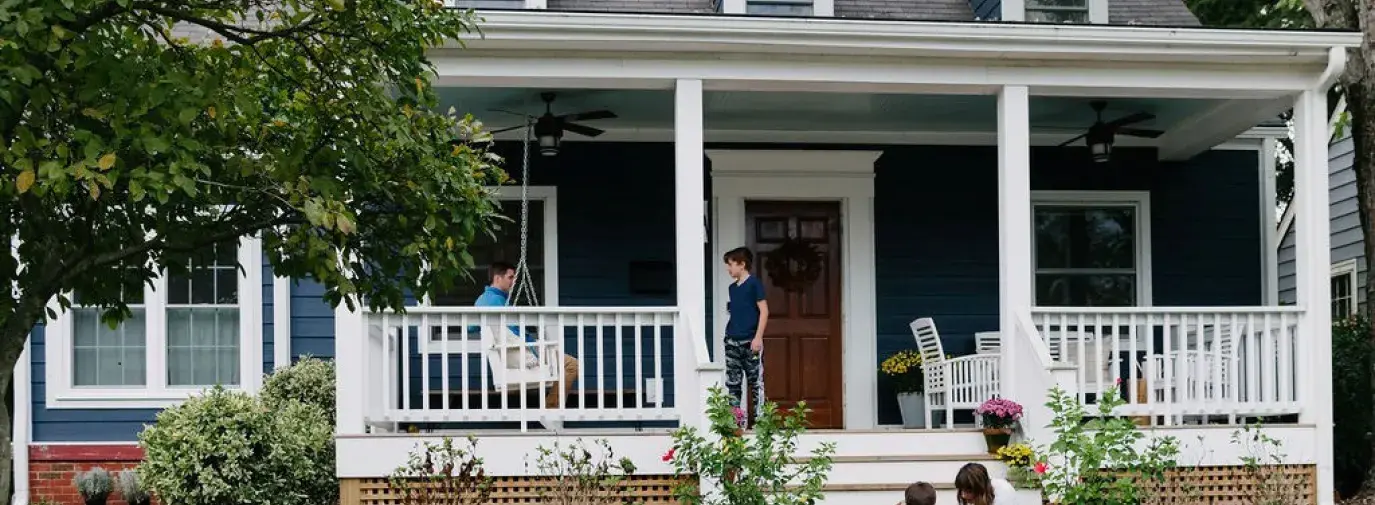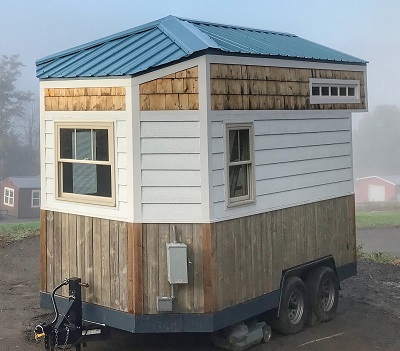
Look around your home and think about all the ways you use this place where you spend much of your time. You’ve heard about the circular economy and zero waste, but have you considered how your space itself could be contributing to your environmental footprint?
Despite the fact that census surveys show that American families are shrinking, the same data show that our homes continue to get larger and larger. Living large seems quintessentially American; in fact, over the last forty years, the average size of a home in the US has increased by 1000 square feet.
But when houses grow, the effects go far beyond simply adding an extra room. Larger houses require significant energy usage, with the average American home using approximately 914 kWh per month. Additionally, the space required for large houses can reduce biodiversity by breaking up habitats. Living in a smaller place can have the added benefit of reducing your footprint in other ways, including some that we may not initially notice.
Downsizing for the Earth
People who have downsized prove you don’t need to sacrifice comfort for the Earth. By reducing the size of your home, you can save money, make more time for the things you truly love, and reduce your environmental footprint in the process.
Miranda Anderson, small-space blogger and host of the Live Free Creative podcast, recounted her experience moving from a 2500-square-foot home to a 1000-square-foot home with her family of five.
“It feels just right—it’s the just right amount of space and just right amount of furniture,” Anderson says. “We knew from a financial perspective how it would reduce our water, electrical, and gas, because when you’re in a big house, you don’t even realize how you’re putting energy in a corner of the house you never go in.”
Dr. Maria Saxton, a researcher focusing on the tiny house movement, found just this phenomenon when she conducted a study on the environmental footprints of tiny house residents. These people take downsizing to the next level by living in a space of 100 to 400 square feet. While there is not a cap on space to be considered a tiny house, residents who identify their homes as such generally live within this size.
Dr. Saxton’s study found that the average American has an ecological footprint of 8.4 global hectares, while those that have lived in tiny homes for over a year have a considerably lower footprint at 3.87 global hectares—about a 45 percent difference. The hectare measurement is a universal scale of carbon emissions and shows the amount of land that would be required to counter an individual’s ecological footprint, making a small change significant.
Enrich Your Life
People interested in downsizing don’t have to go straight into a tiny house to reduce their footprint. For Anderson, simply transitioning to a smaller house sparked lifestyle changes.
“Downsizing almost created a domino effect for the people in my study,” says Dr. Saxton. “Things like their diet, their transportation, especially the purchasing habits and recycling habits, there’s a myriad of things that downsizing influences in other parts of your lifestyle.”
Dr. Saxton found that respondents reduced the amount of meat in their diet, ate less food packaged in plastic, and even flew less. The full effects impacts of these trends aren’t entirely known, but these far-reaching effects are encouraging.
Tiny houses are part of a relatively new movement and represent the extremes of downsizing, but the positive impacts of transitioning into smaller homes shows that in addition to improving your environmental impact, downsizing influences all aspects of your life.
The tiny house residents Dr. Saxton interviewed said that their living situations left them better able to save and spend on what they care about most, like travel, children’s education, or other goals.
“They would say things like, ‘now I have more money to travel,’” Dr. Saxton says. “‘Now I have more money to set aside for my children’s college education or to save.’”
Anderson started downsizing at the same time as she decided to challenge herself and her family to not buy any non-consumable goods for a year.
“We started to spend our time and money in new ways,” Anderson says. “And that for us was experiences, adventures, and traveling, like going on picnics and taking my kids to the park more often. Our motto ended up being ‘less stuff; more adventure.’”
The Downsizers Community
Both Anderson and Dr. Saxton found that when you downsize, you may become engaged with the “buy less” community (see more here). The sharing economy is very important to the downsizing movement, as downsizers can find clothing, furniture, and other household items, all without contributing to further waste.
“This enables them to volunteer both in their communities, or spend more time with their family,” Dr. Saxton says. “They’re going out into their community and doing what they want to be doing.”
Anderson agrees with Dr. Saxton’s findings, saying that downsizing forced her to narrow her shopping to necessities. It was easier than she expected, because her smaller living space would have made it impossible to store more items than just what she needed.
Even after the year of not shopping ended, Anderson didn’t fall out of the habit of buying less.
“I realized really quickly that I was not shopping,” she says. “I opened up so much space, resources, and extra money in our budget every month because I hadn’t gone to Target to buy random things.”
The Path Forward
Although small apartments are permitted under zoning laws, many municipalities restrict the construction of residences under 400-500 square feet, making tiny houses effectively impossible to build. As a result, many residents take advantage of their mobility and use large vehicles to tow their homes to rural areas, friends’ properties, or RV parks.
Of course, tiny houses aren’t the only good options for downsizing; apartments feature benefits these freestanding residences can lack. Tiny houses can have external energy footprints from activities that may be impossible to fit inside, like showering at a gym or eating out for meals that can’t be made in micro-kitchens, while apartments are likely to contain the basics. Architectural researchers have found that apartment buildings also have very low embodied carbon levels, and the condensed living arrangements further reduce individual footprints.
Home-sharing and co-ops also allow for more traditional living styles while still having a positive impact on the environment. Green America partners with green housing organizations (find them by searching for housing at GreenPages.org) that help residents choose homes that reduce energy and space.
Additionally, living in a small apartment close to work would allow for even shorter commutes and access to mass transit, making it a practical option for young professionals.

For Thom Stanton and his family, downsizing seemed like the best way they could make a difference in their personal lives.
“I’m not going to be the person who invented the scrubber for the upper stratosphere,” says Stanton. “But with this home, the smaller the house, the less that goes into it from the start and the ongoing efficiency is incredible—we predominantly run off of a 400-watt space heater.”
Our growing houses have taken a toll on our environment. These stories show that downsizing can reduce your footprint and waste. It can even free up money and time for the people and activities you care about most.







